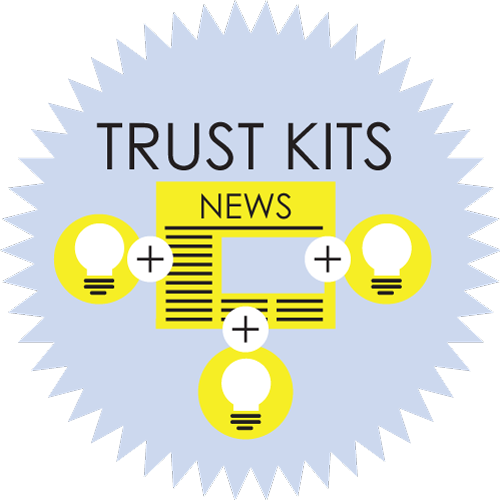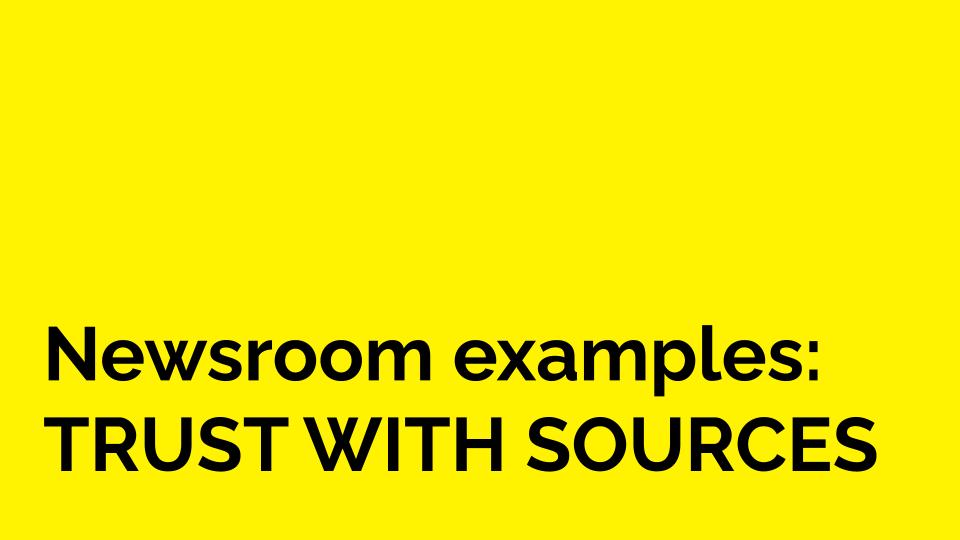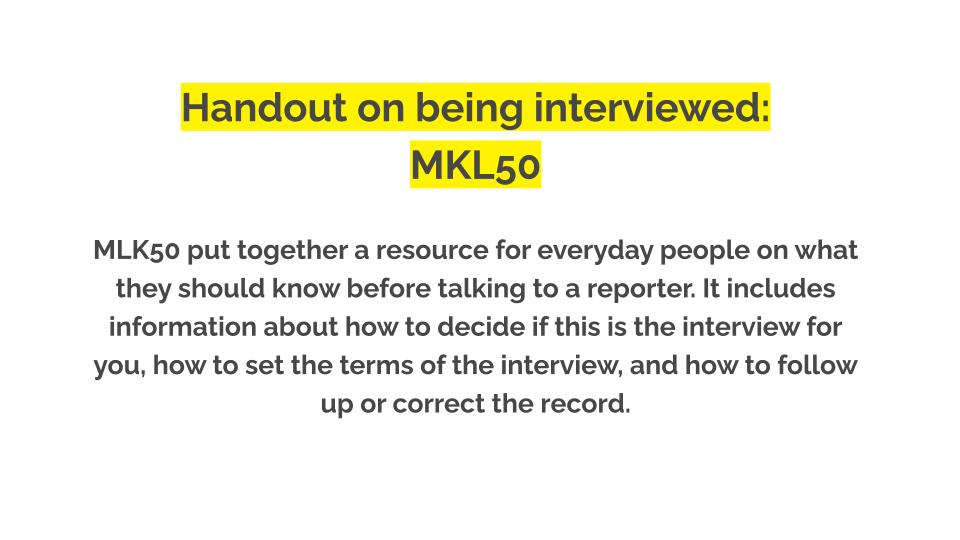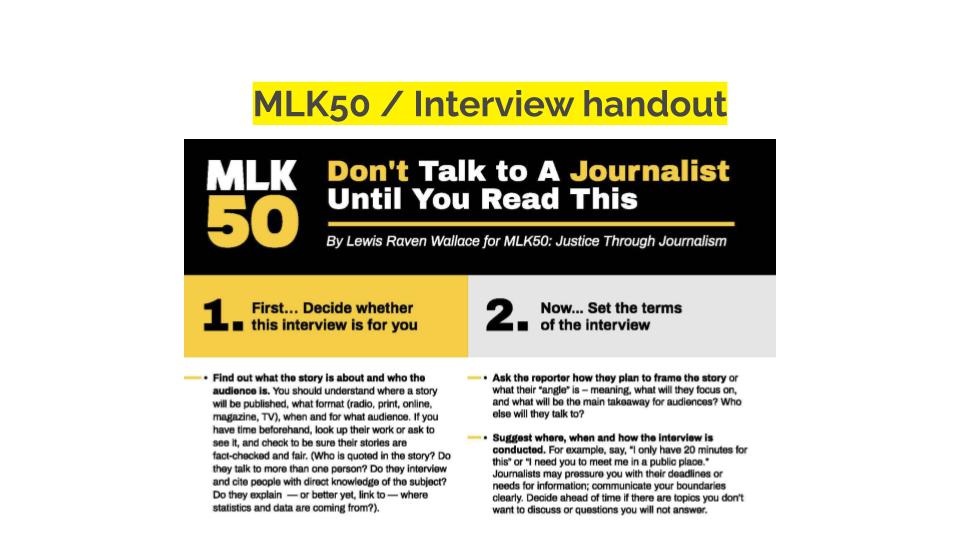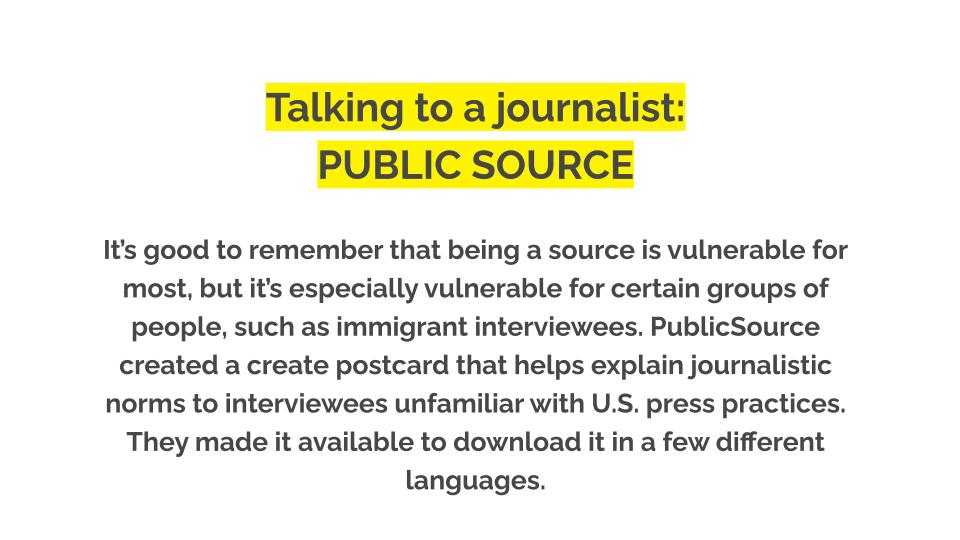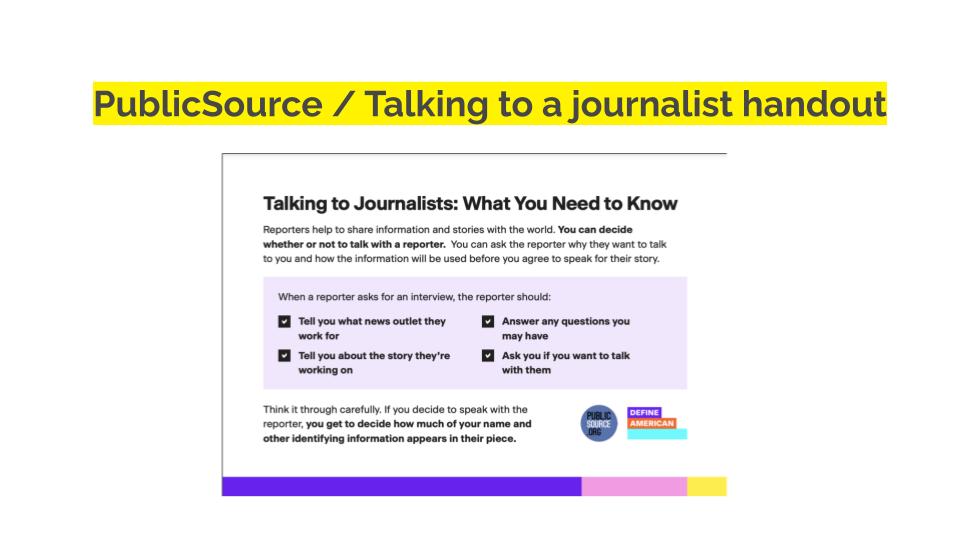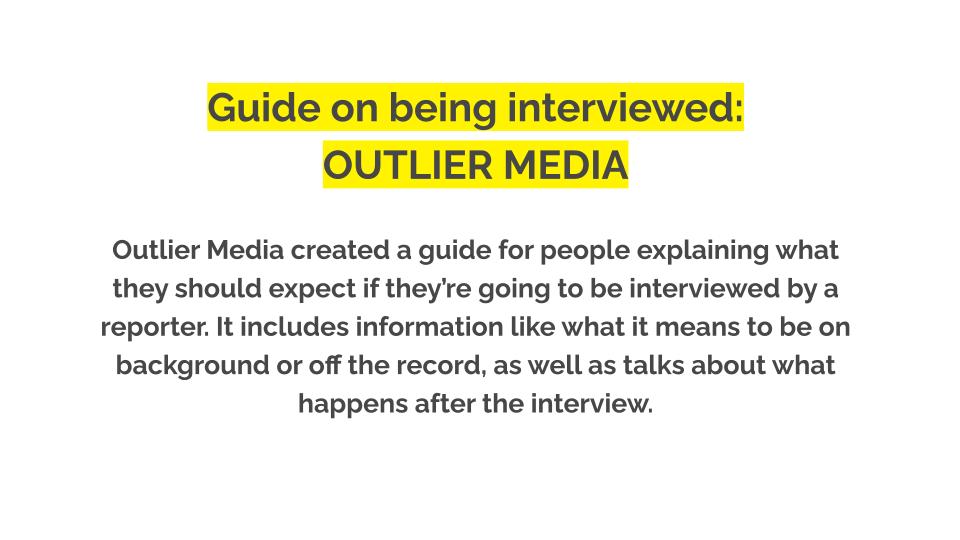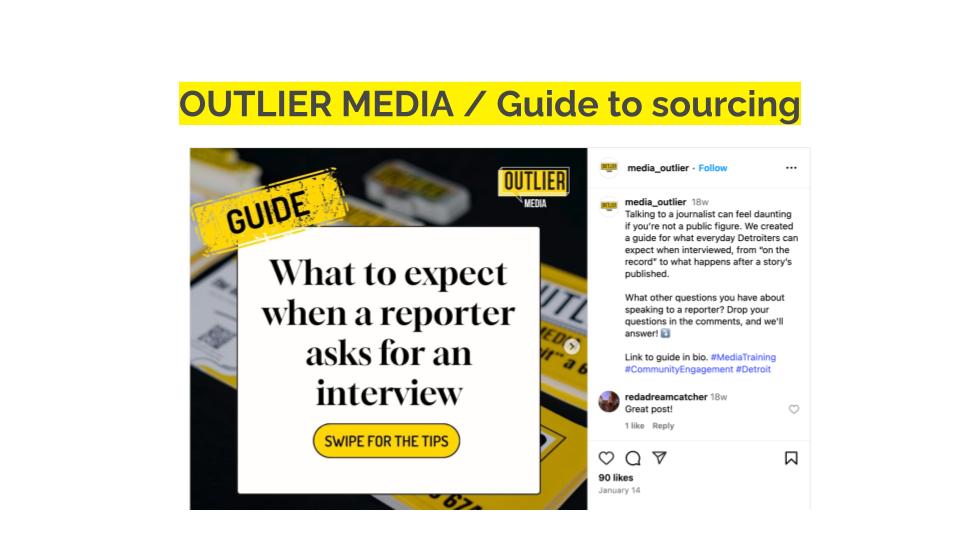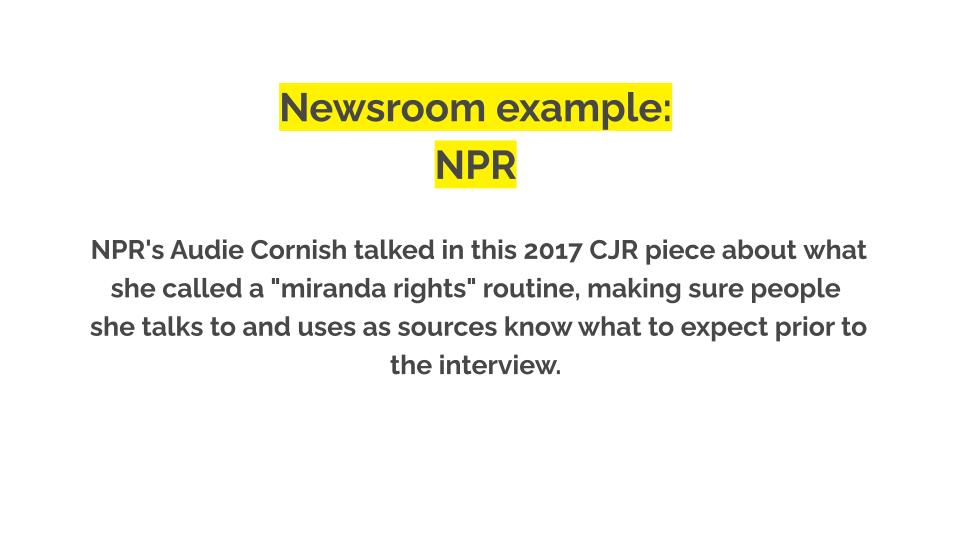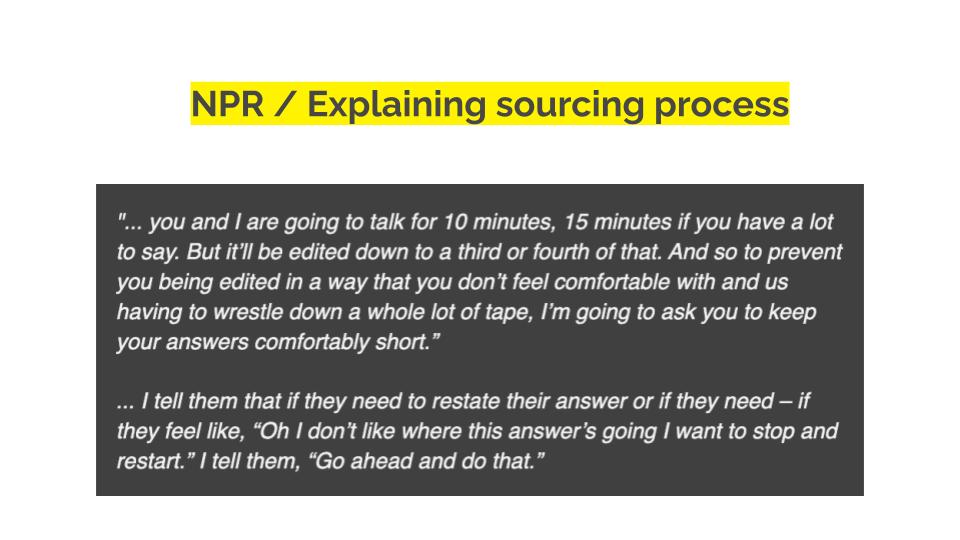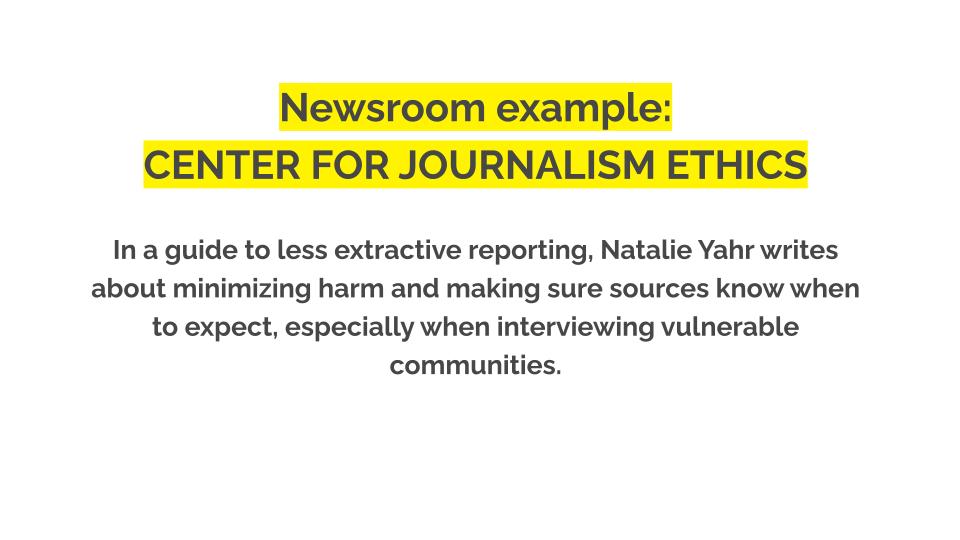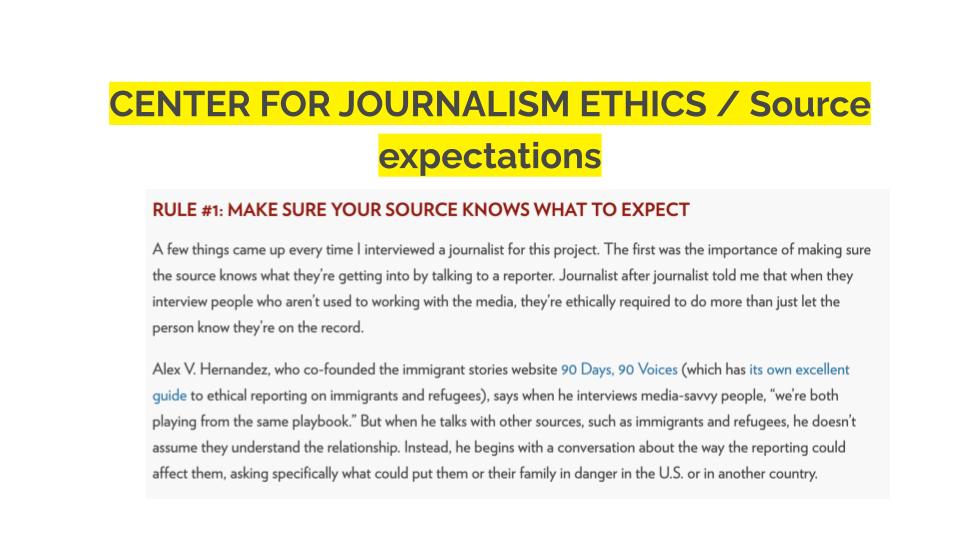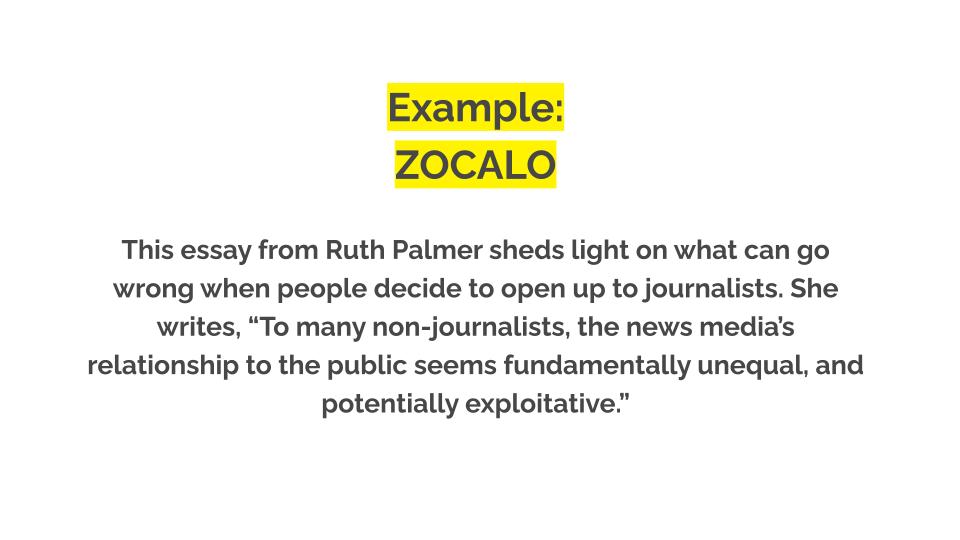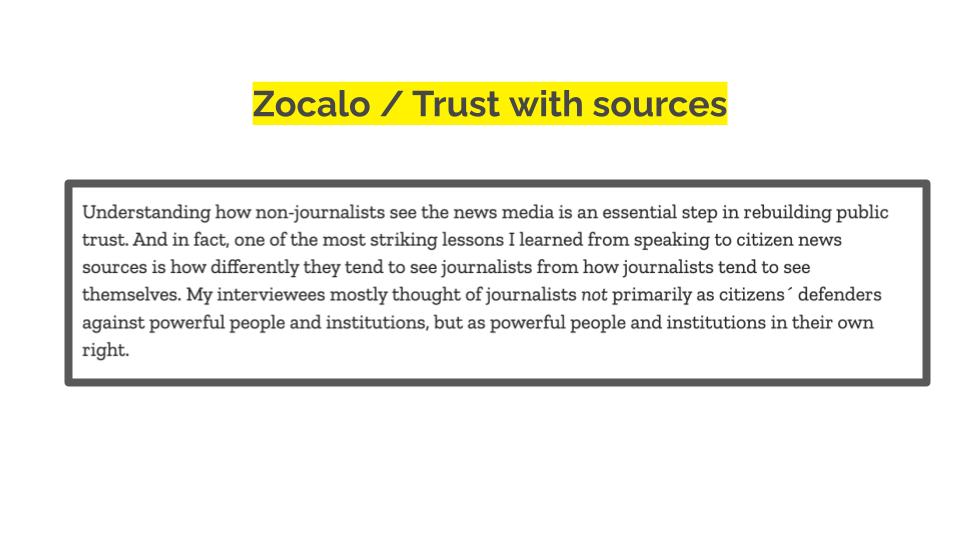HOW NEWS WORKS
Earn trust with sources
Have you been interviewed by a journalist? It can feel scary to be on that side of the interaction. Consider the power dynamic at play — someone shares their life, their opinion and their experience, with no control over how they are portrayed in the final product.
On the low end of what could go wrong, journalists could take a bunch of someone’s time and then not include them in the story. They could also get facts wrong. They could take something out of context. They might produce a story that is factually accurate but still not *really true.* Being featured in news coverage can come with a lot of potential downsides for people’s reputations, businesses and even safety. It’s reasonable for people to feel wary and vulnerable.
Some of the wariness on the part of a potential source can be mitigated if journalists take time to explain how the process will work — to earn the right to have someone open up to them. (We’re envisioning regular people here, not spokespeople, public officials or other routine sources whose job it is to answer questions.) For many people, talking to you might be their first conversation with a journalist.
So, how can you make the process less risky and more transparent?
Some of the wariness on the part of a potential source can be mitigated if journalists take time to explain how the process will work — to earn the right to have someone open up to them.

Goals
Journalists can develop routines around their interactions with sources, so everyone is on the same page about:
-
- The logistics of the interaction
- What the story is and what information the source will be asked to share
- What places and formats the information might appear
- The reporter’s credibility
- What happens after the interview
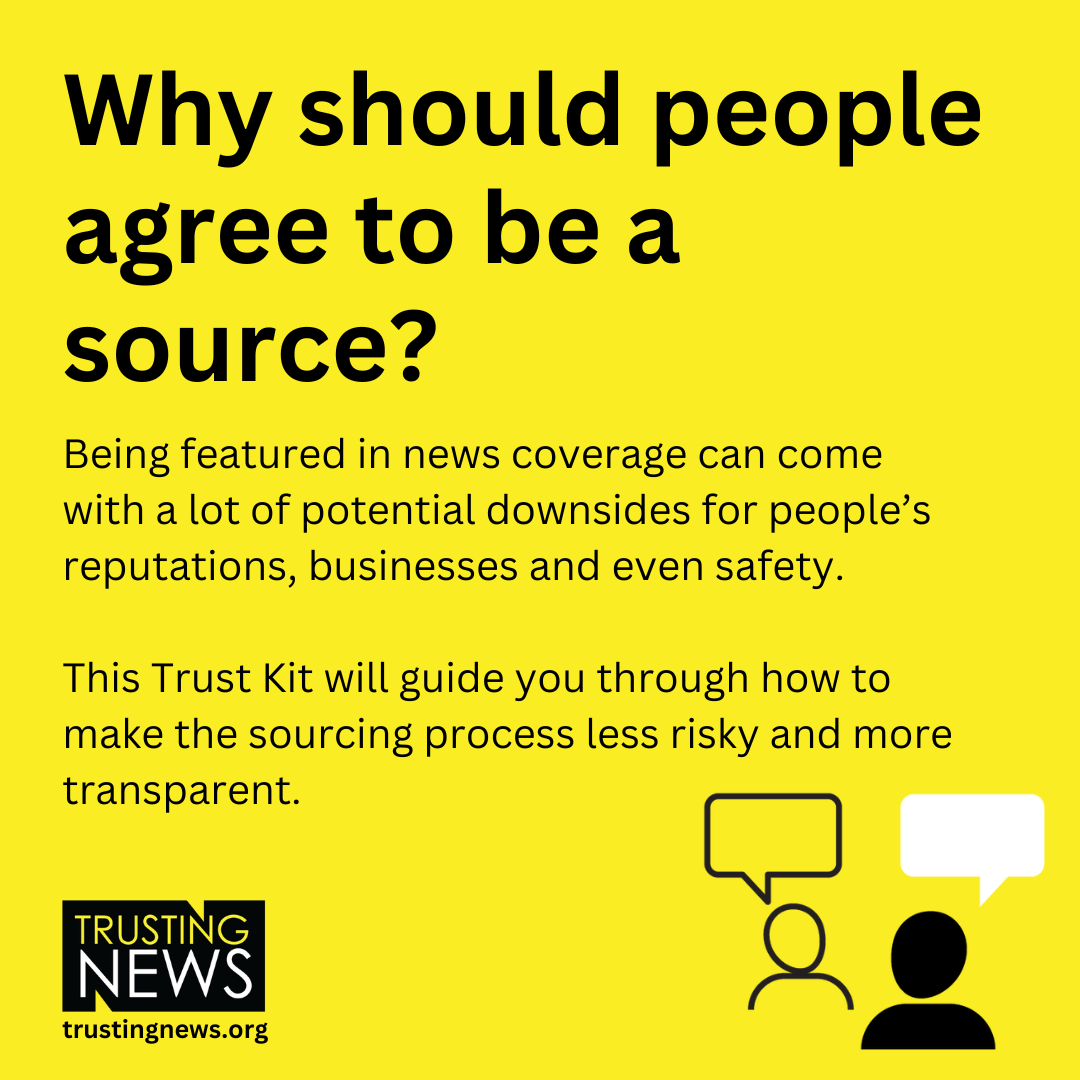

Strategies
Below you’ll find a list of strategies to help you build clearer expectations with your sources and the people you interview. Click or tap the blue boxes to expand each section.
Why they should trust you
Do what you can to make them comfortable with the interaction, and with you specifically. Tell them you want to report the story fairly and accurately, and what that means to you. Invite them to get to know you and your work. Do you have credibility with this topic? Is this something you’ve been covering over time? (If so, have a previous example handy.) Have you articulated your approach to reporting, or your goals for your beat in general? Do you have a long history with the community? Do you have something in common with them? Can you demonstrate a genuine curiosity about them and desire to do right by their story.
Interviewing vulnerable communities
It’s good to remember that being a source is vulnerable for most, but it’s especially vulnerable for certain groups of people, such as immigrant interviewees. We love this postcard resource created by PublicSource that helps explain journalistic norms to interviewees unfamiliar with U.S. press practices. You can download it in a few different languages here.
Working with a whistleblower?
This Trust Kit is aimed at the kind of relationships with sources that most journalists deal with day to day. If you are in the less typical position of working with someone who is putting their own career, safety and reputation on the line to blow the whistle on a powerful organization or company, additional considerations are needed. An organization called The Signals Network supports both whistleblowers and journalists as they navigate sources’ risk and the public’s right to know.
The interview logistics. Here are some questions potential sources might have.
- Where will the interview take place?
- Will you come alone or with a colleague?
- Will you be recording audio? If so, will that be for your note taking or for publication?
- Will you be taking photos or shooting video? If visuals will be involved, do you hope to capture certain things about the person’s surroundings or appearance?
- How long should they expect to spend with you?
The nature of the story
- What are your goals with the story — what do you hope to explain, draw attention to, or just tell a story about? What will the story *not* cover?
- What role do you hope this person will play? Explain if they are the focus of the story, or just one of several people being interviewed (and who may not even be included).
- How much of their interview is likely to get shared? Perhaps all of it, if it’s live? Perhaps none of it? Perhaps one sentence from a 30-minute conversation?
- Where will the story appear? Don’t assume people understand that they could go both on your website, in a podcast and on TV, for example. They definitely might be surprised to know that any of the newsrooms you’re affiliated with could pick the story up.
What information you’ll ask for
Will you need their first and last name? Don’t take for granted that they will know that automatically. We know as journalists that being on the record is important, so the audience can know who they’re hearing from and can put the information in context. But your source might never have given that any thought. If they express surprise, try connecting your need to the bigger picture of how journalism works.
To explain the need to be on the record, say something like: I’m sure you can understand that journalists can’t just publish stories full of anonymous comments. We ask people to be held accountable for the information and experiences they share, so our communities can decide for themselves what to think about it. That’s true for public officials or people at the center of big news events, and it’s also true for the general public weighing in on matters of public concern. In fact, we very rarely allow sources to remain anonymous in stories.
Will you ask to make public the name of their business? Their age? Their kids’ names and ages? The part of town they live in?
Some resources that might help:
What kind of reaction the story might bring
Depending on the topic and the person, it can be a good idea to make sure they know they are opening themselves up to attention, online comments, etc. The story will be findable online. People might Google them, or look up their social media profiles. The more vulnerable the source is, the more important it is to take care with this step.
What happens next
Will the story run later that day, or in two months? What control does the reporter have, and what decisions might an editor make that would affect the source? Could the story get spiked, or could their part of it be cut?
Remember, the whole production process is invisible to people outside the newsroom unless you explain it. And the assumptions people make about your decision making will not usually be positive ones. If they don’t see themselves in your coverage, they might think you didn’t agree with what they said or wanted to hide their perspective. Or they might keep watching your channels, thinking they’ll be in a future story instead.
Will you call them back to double-check that you have things right? Or give them a chance to respond to points made by other sources? Have some empathy for what these new sources might be nervous about, and put their minds at ease.
Be sure to follow up
Depending on how much time they spent with you, it might be worth checking in to see how they felt about the finished product. If you appreciated an anecdote they shared but couldn’t use it, thank them for it. If they didn’t appear in the finished product at all, tell them how they helped round out your understanding of an issue and informed your reporting overall. And definitely take time to send a link to the story to everyone you interviewed.
Want a quick overview? In the short video below, director Lynn Walsh explains the importance of earning trust with sources.

Putting it into practice
You clearly won’t go through all these steps for every interview. We recommended looking for opportunities to try them out, though. You’ll figure out for yourself which feel useful, and with which sources.
Journalists have a lot to learn from each other about processes like these. Consider talking to your colleagues about source relationships and find out what works for them.
To level up: Consider making a handout or saving an email template explaining some basics, to share with new sources.
See how other newsrooms do it
For some inspiration, here are examples of how journalists are building trust with their sources. For more newsroom examples, check our our newsroom example database.
We’re here to help!
Congratulations on getting this far in the Trust Kit! We know taking the steps to earn trust isn’t always simple or easy. It takes time and often requires a shift in newsroom routines or workflows.
Any progress you make on implementing strategies in this Trust Kit should be celebrated as a win!
